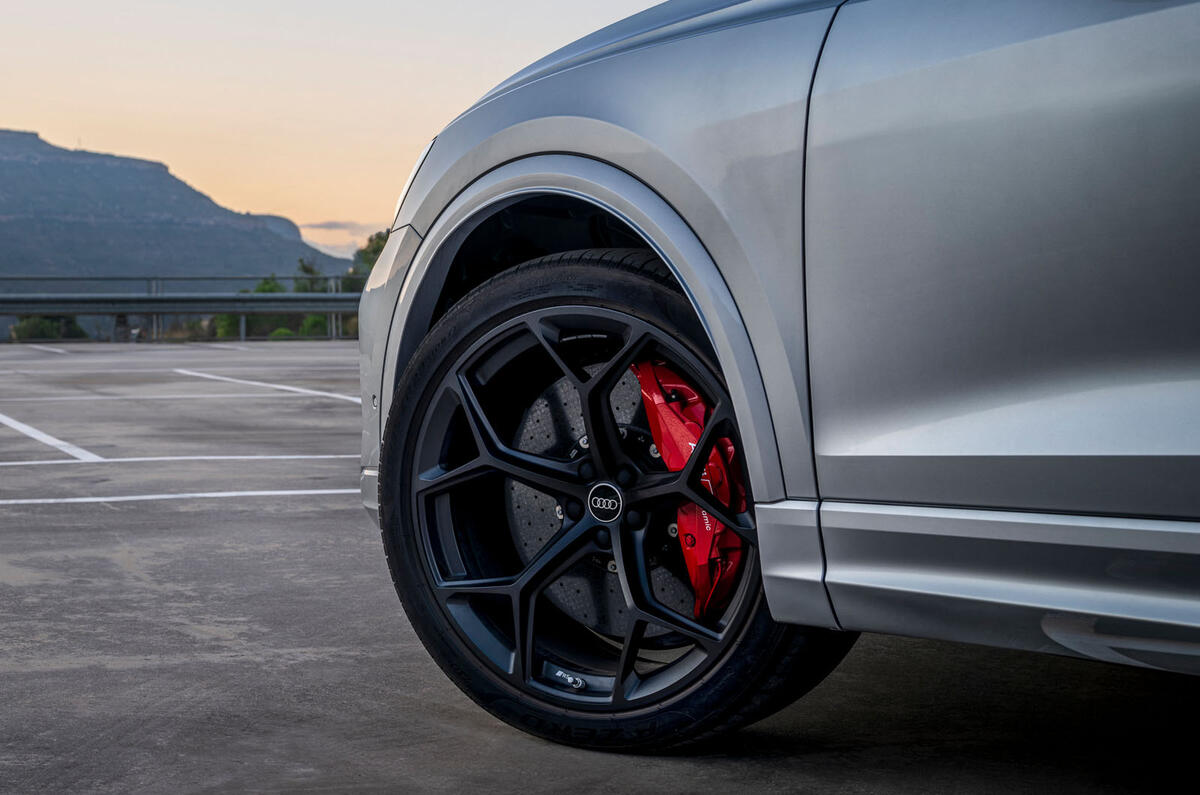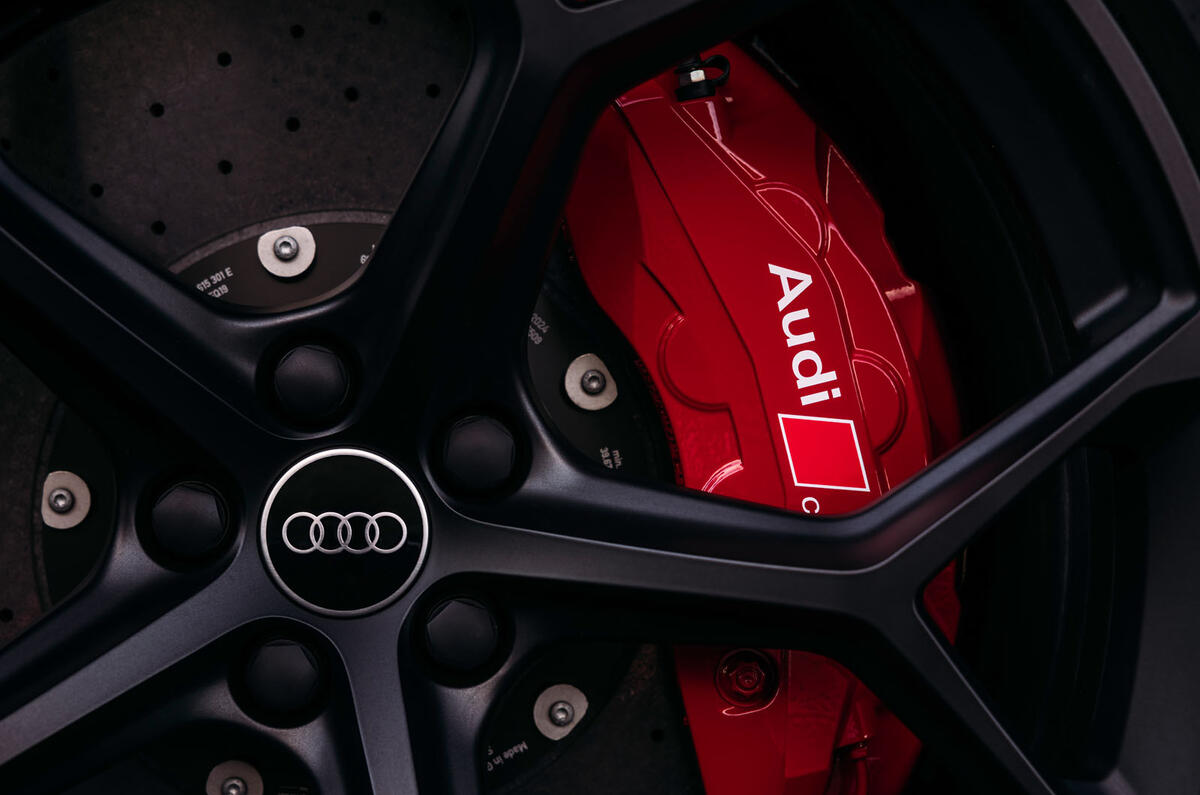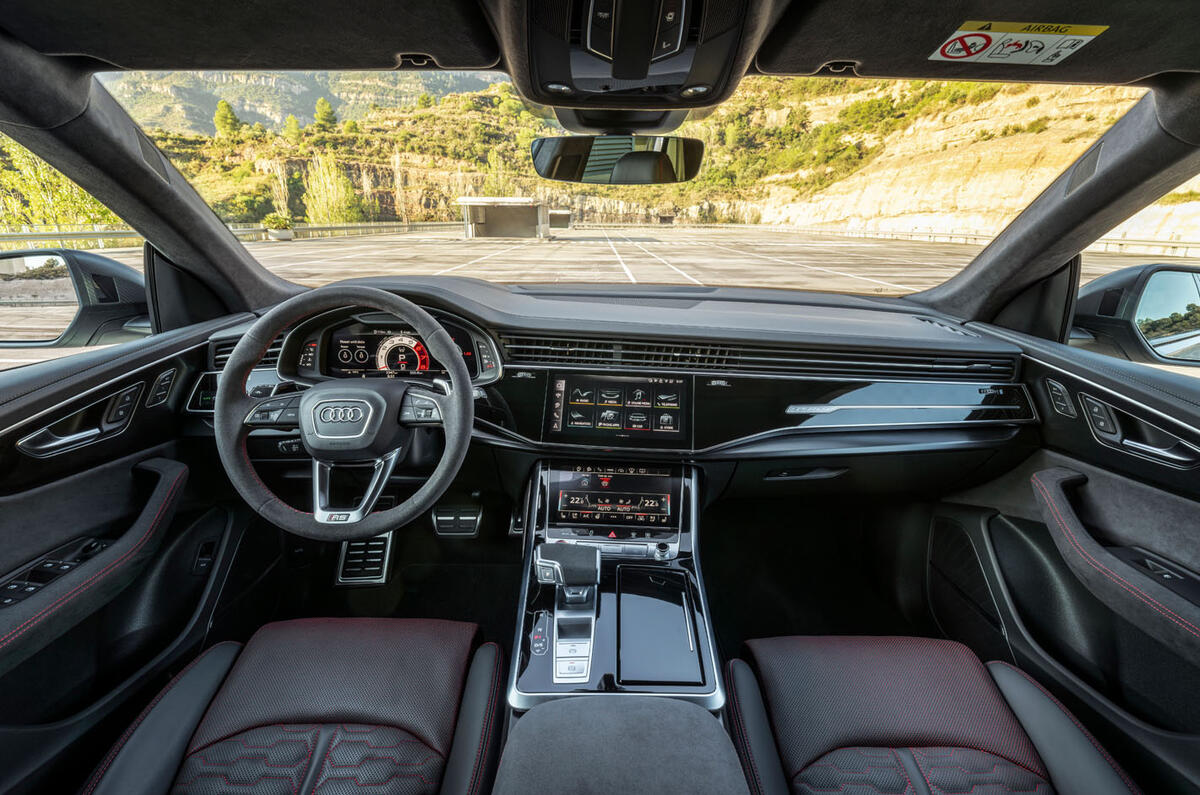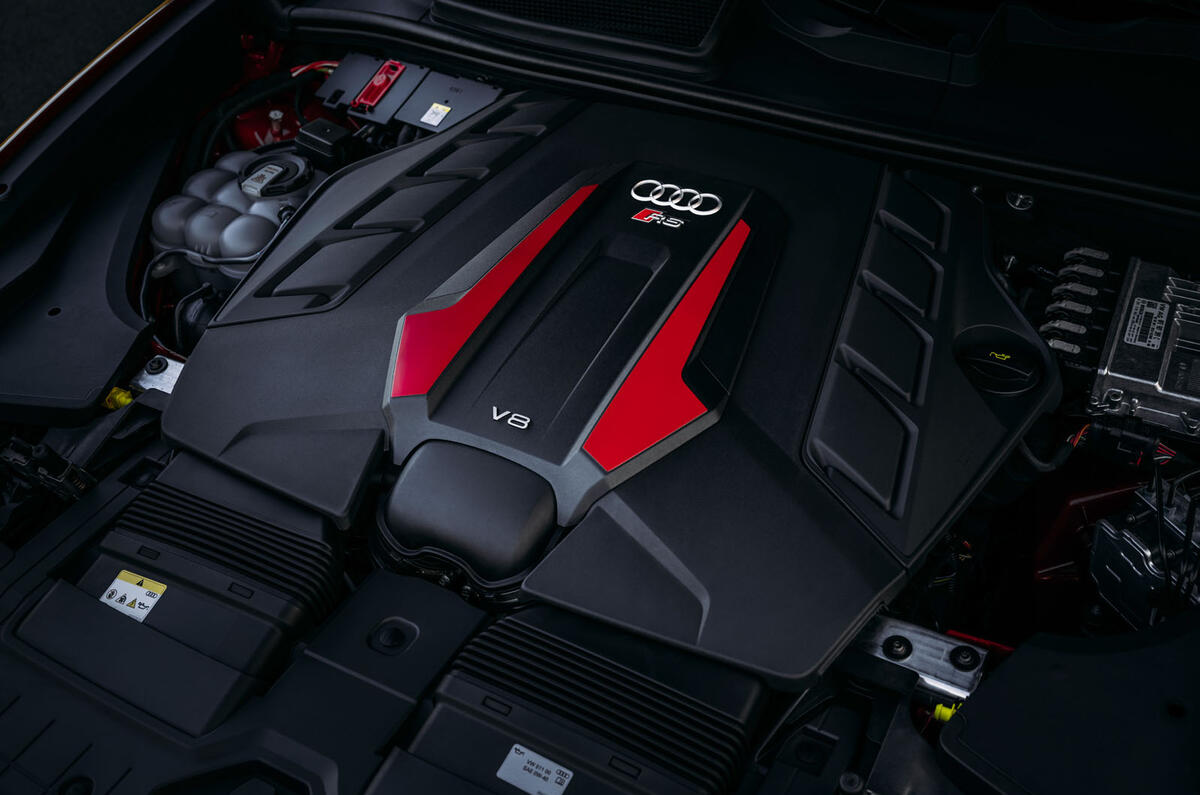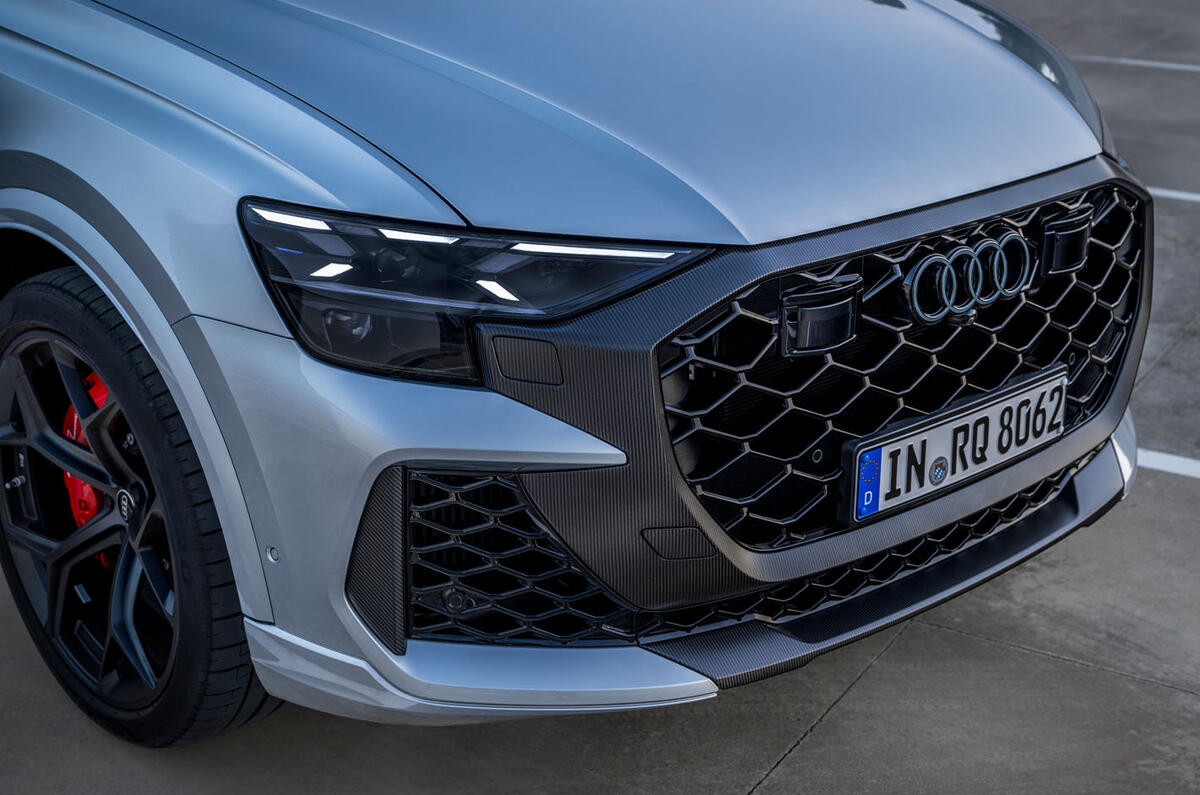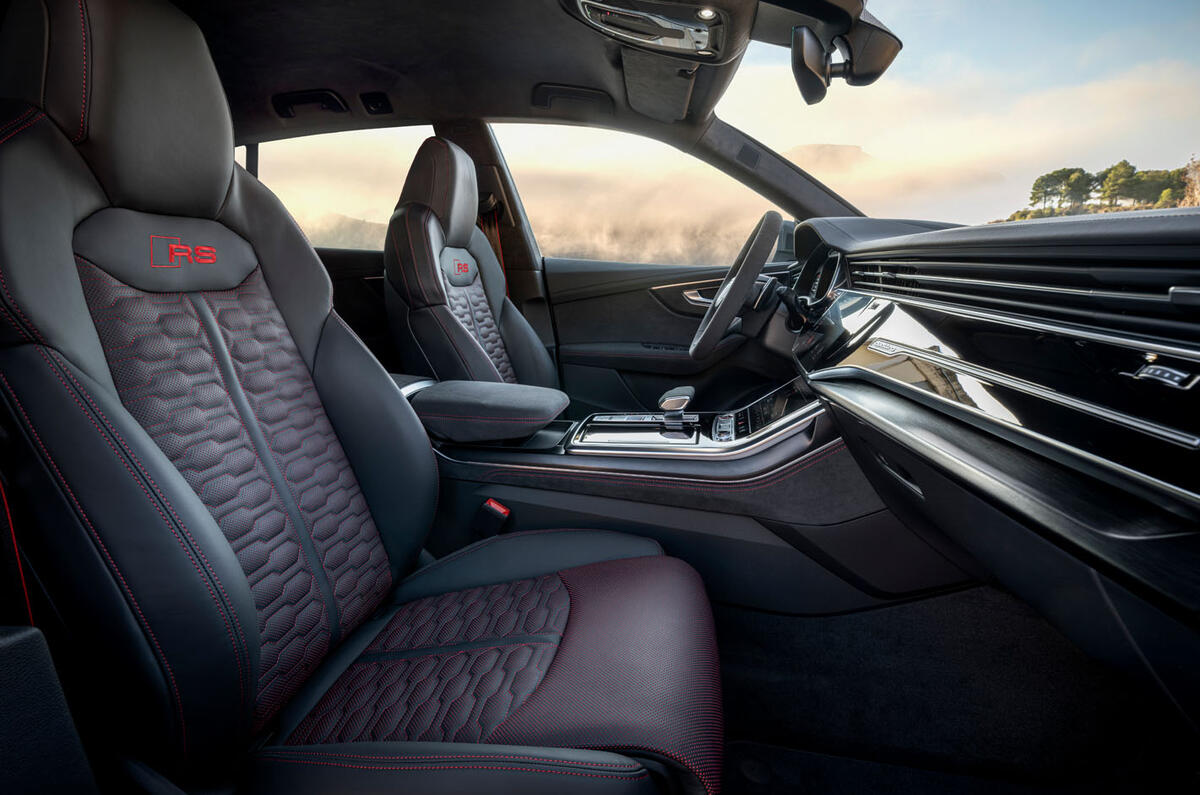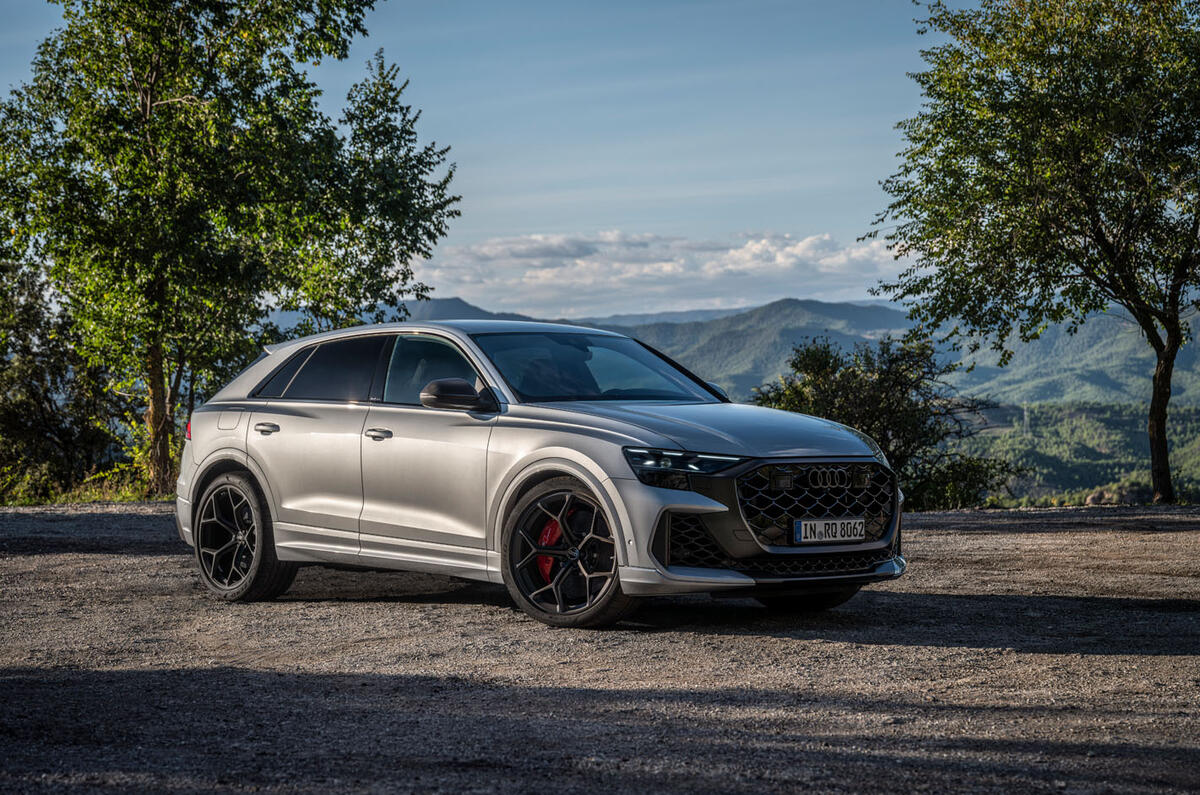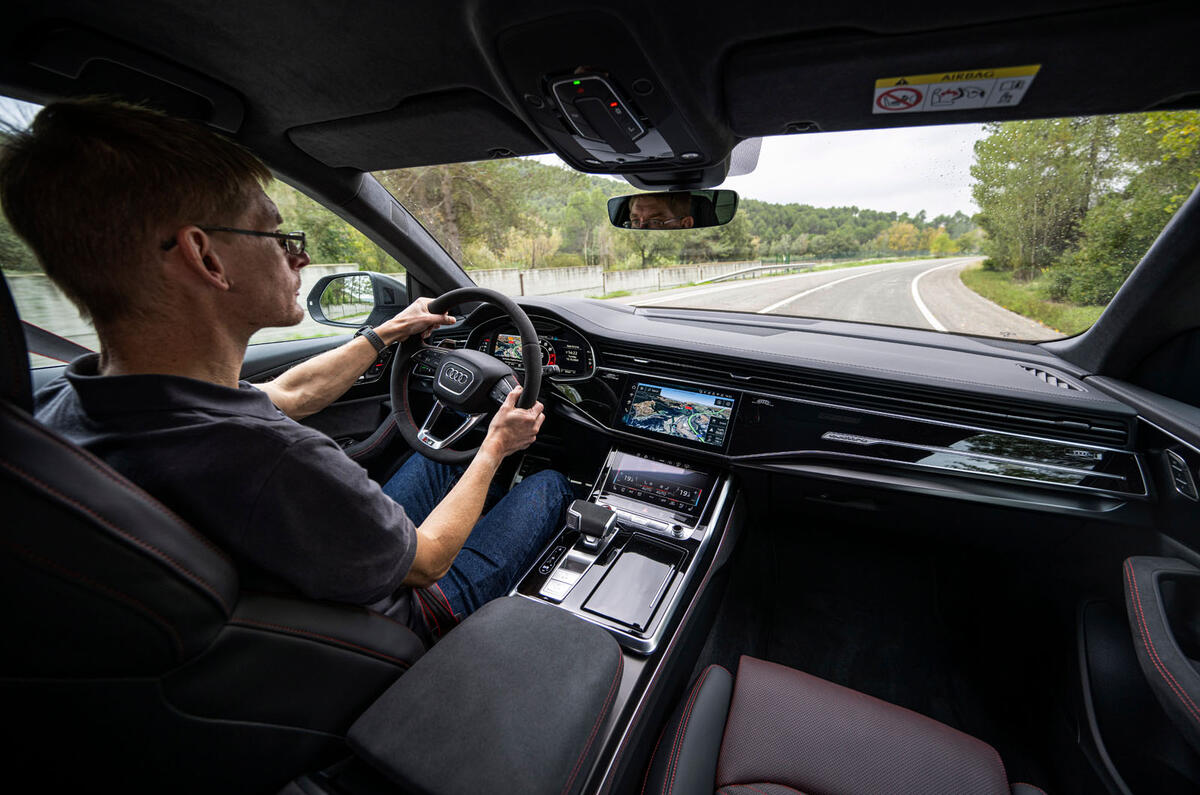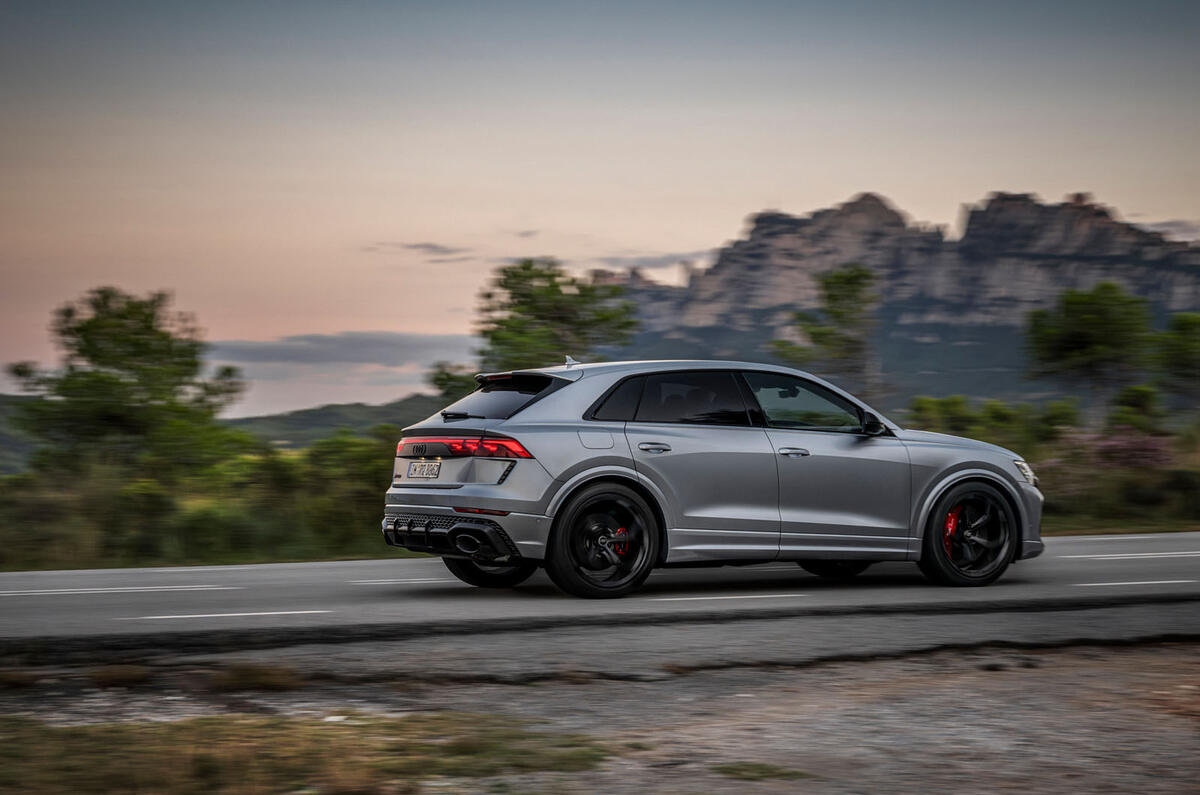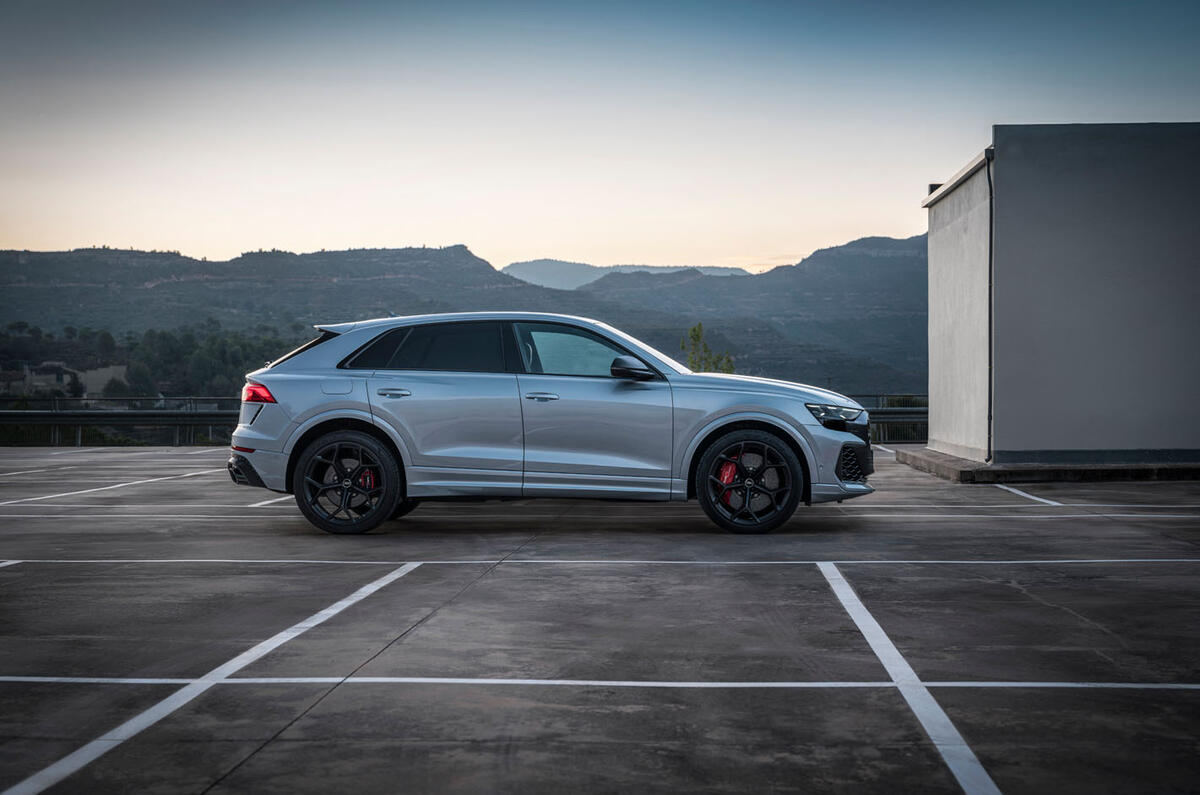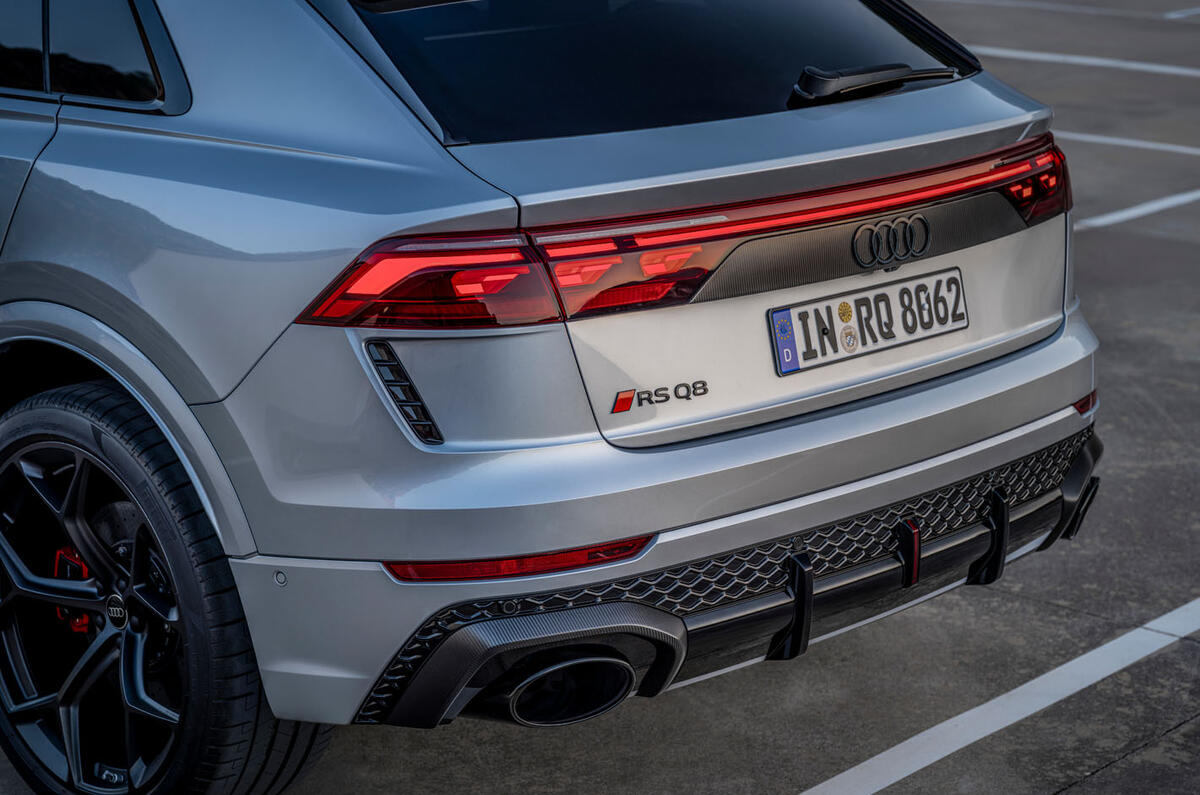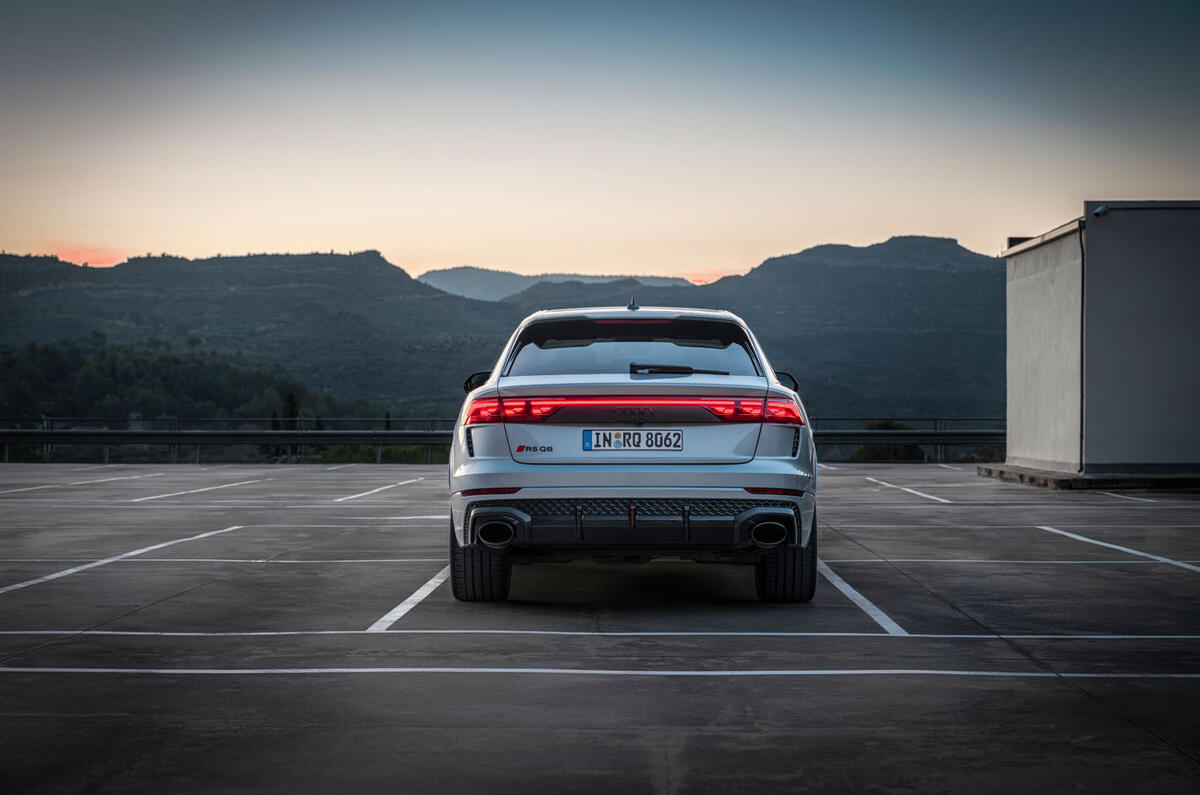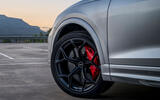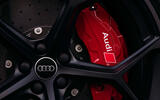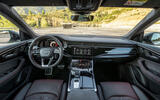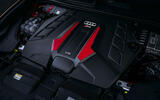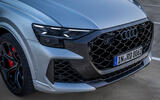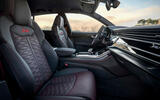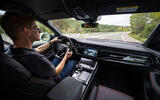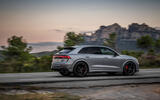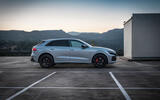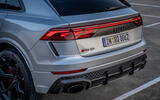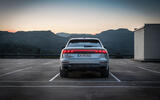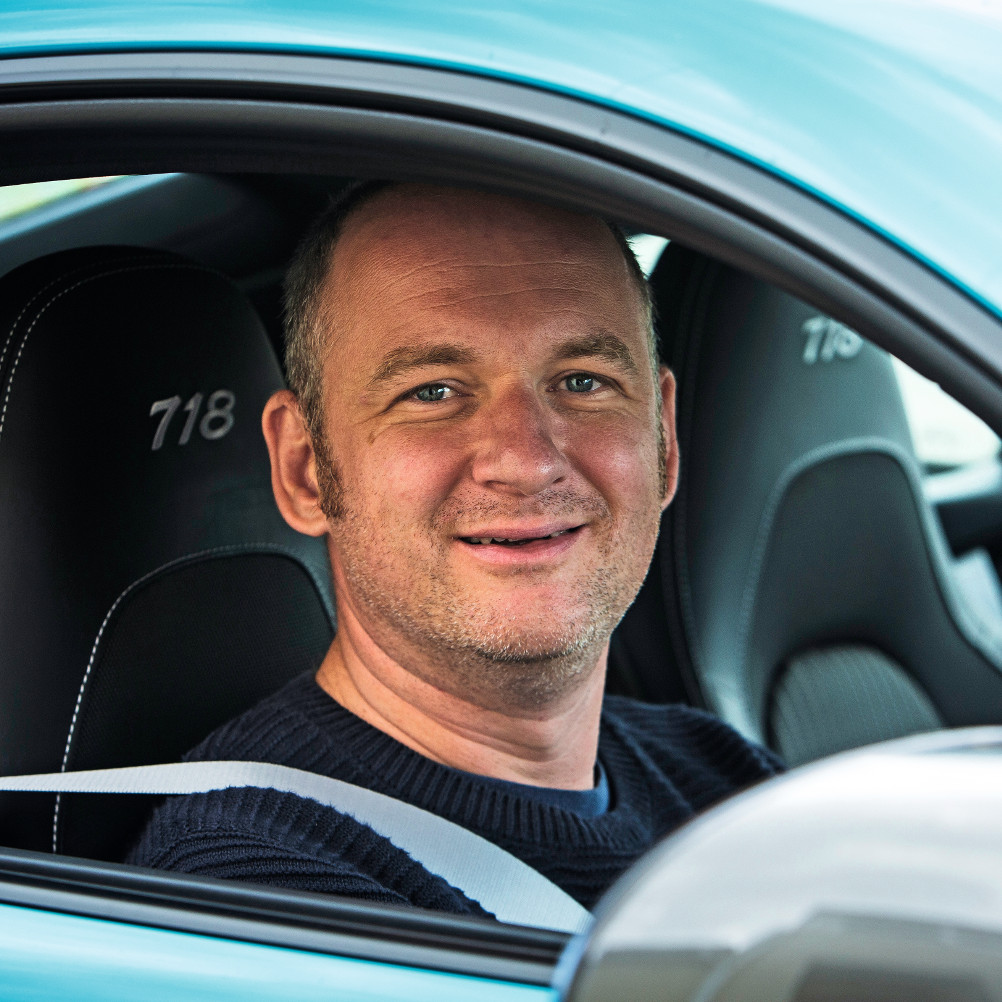There’s a fair bit going on with the RS Q8. Underneath its aggressively enhanced Q8 skin (the legendary Group B S1 quattro is said to have influenced the go-faster add-ons, although you’d be hard pressed to see the similarities) is an upgraded Audi SQ8.
Out goes that car’s diesel engine, replaced by the same twin-turbocharged 4.0-litre V8 petrol that serves in the Porsche Cayenne Turbo and Lamborghini Urus. Even in standard form it it delivers 592bhp and 590lb ft (That’s more than the Porsche, but less than the Lambo). There’s also a 12kW starter-generator that gives the unit mild-hybrid status, plus cylinder deactivation.
Drive is transmitted to all four wheels via an eight-speed automatic to four-wheel drive that can channel up to 80% of the torque to the back axle (40/60 front to rear is the default setting) and is equipped with an active torque vectoring limited slip differential.
Suspension modifications run to a wider track (10mm front and 5mm rear), revised damper rates for the adaptive air suspension and the option of a 48V anti-roll system that’ll be familiar to Porsche and Bentley owners. Our car was fitted with this kit alongside optional 23-inch alloys (21s are standard), although the 295mm width of the tyre is the same regardless of wheel diameter. There’s also four-wheel steering (standard on the flagship Vorsprung), which can turn the back wheels up to five degrees in the opposite direction to the fronts at low speed, and 1.5 degrees in the same direction above 37mph.
For the very light mid-life facelift, the car retains a similar front-end to before, with some minor change to the grille and new matrix LED headlights. Meanwhile, the beefy rear diffuser gains new design touches, while wheels range up to 23in in size.
The 628bhp Performance range-topper is the headline addition to the mide-life facelift for the RS Q8 – and the major change is that bumped-up output. There are a few exterior styling tweaks to make it look a touch beefier, including to the front grille and rear diffuser. It features bespoke matrix LED headlights and optional lighter 'motorsport-inspired' 23in alloy wheels (a different 23in design is offered on the standard model).



